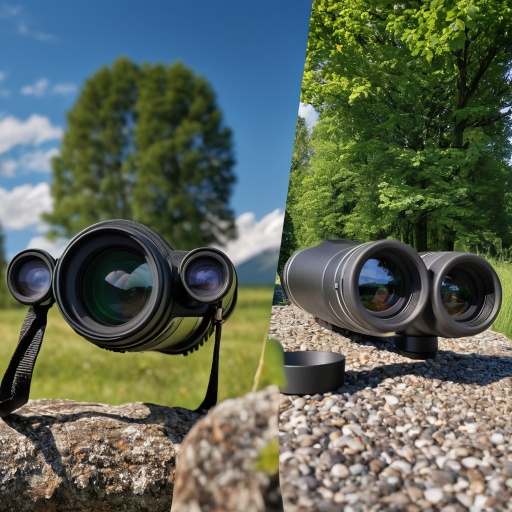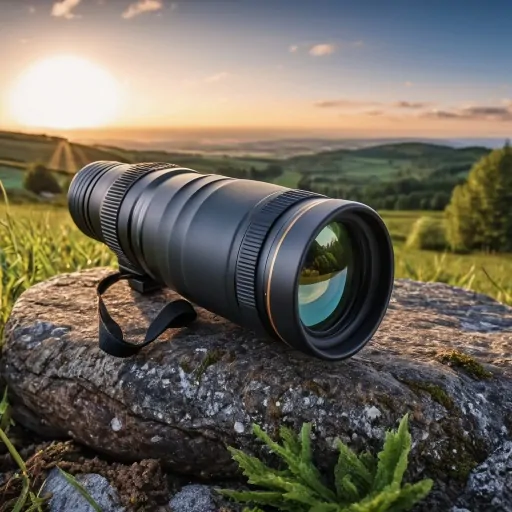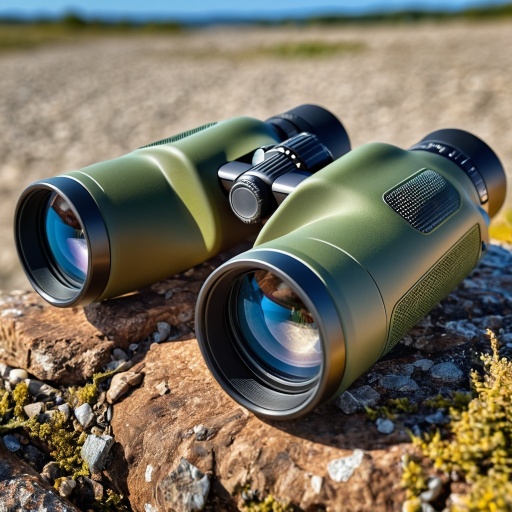When it comes to optical devices for magnification, two of the most popular options are monoculars and binoculars. Both serve the purpose of bringing distant objects closer, but they cater to different needs, preferences, and use cases. Whether you’re a birdwatcher, hiker, hunter, stargazer, or just someone who enjoys outdoor activities, understanding the differences between monoculars and binoculars can help you make an informed decision. In this article, we’ll dive deep into the world of monoculars and binoculars, exploring their features, advantages, disadvantages, and ideal use cases. Let’s start Monocular vs. Binocular.

What is a Monocular?
A monocular is a compact, single-lens optical device designed for magnifying distant objects. It functions like a miniature telescope, offering a lightweight and portable alternative to binoculars. Monoculars are typically smaller, easier to carry, and often more affordable than their binocular counterparts.

Key Features of Monoculars:
- Single Lens: Uses one optical tube, making it smaller and lighter.
- Compact Design: Fits easily in a pocket or bag.
- Portability: Ideal for travelers and outdoor enthusiasts.
- Ease of Use: Simple to operate with one hand.
- Affordability: Generally less expensive than binoculars.
What is a Binocular?
A binocular, on the other hand, is a dual-lens optical device that provides a stereoscopic view of distant objects. It consists of two telescopes mounted side by side, allowing users to see with both eyes simultaneously. Binoculars are known for their immersive viewing experience and are widely used in activities like birdwatching, hunting, and stargazing.

Key Features of Binoculars:
- Dual Lenses: Provides a 3D view with depth perception.
- Wider Field of View: Allows users to see more of the scene.
- Comfortable Viewing: Reduces eye strain with two-eye use.
- Stability: Easier to hold steady compared to monoculars.
- Versatility: Suitable for a wide range of activities.
Monocular vs. Binocular: Key Differences
To help you decide which device is right for you, let’s break down the key differences between monoculars and binoculars:
1. Size and Portability
- Monocular: Extremely compact and lightweight, making it ideal for travelers, hikers, and anyone who values portability.
- Binocular: Larger and heavier due to the dual-lens design, but still portable enough for most outdoor activities.
2. Ease of Use
- Monocular: Simple to use with one hand, but may require more effort to stabilize for extended periods.
- Binocular: Easier to stabilize and use for long durations, thanks to the two-hand grip and balanced design.
3. Field of View
- Monocular: Offers a narrower field of view, which can make it harder to track moving objects.
- Binocular: Provides a wider field of view, making it easier to observe and track subjects like birds or wildlife.
4. Depth Perception
- Monocular: Lacks depth perception since it uses only one lens.
- Binocular: Offers true depth perception, enhancing the viewing experience, especially for activities like hunting or birdwatching.
5. Image Quality
- Monocular: Generally provides good image quality but may not match the clarity and brightness of binoculars.
- Binocular: Delivers superior image quality, especially in low-light conditions, due to the larger objective lenses and dual-eye viewing.
6. Price
- Monocular: Typically more affordable, making it a great option for beginners or those on a budget.
- Binocular: More expensive due to the dual-lens system and advanced optics, but offers better performance for serious enthusiasts.
7. Durability
- Monocular: Often more durable due to its simpler design and fewer moving parts.
- Binocular: While durable, the additional components (e.g., hinges, prisms) may require more maintenance.
Advantages of Monoculars
- Portability: Monoculars are small enough to fit in your pocket, making them perfect for travelers and hikers.
- Lightweight: Easy to carry for extended periods without causing fatigue.
- Affordability: A budget-friendly option for those who don’t want to invest in expensive optics.
- Discreetness: Less conspicuous than binoculars, making them ideal for situations where you don’t want to draw attention.
- Versatility: Can be used for a variety of activities, from sightseeing to wildlife observation.
Disadvantages of Monoculars
- Limited Field of View: The single-lens design restricts the amount of scenery you can see at once.
- No Depth Perception: Makes it harder to judge distances, which can be a drawback for activities like hunting.
- Eye Strain: Using one eye for extended periods can cause fatigue.
- Stability Issues: Harder to hold steady compared to binoculars, especially at higher magnifications.
Advantages of Binoculars
- Immersive Viewing: The dual-lens design provides a more natural and immersive viewing experience.
- Wider Field of View: Makes it easier to track moving objects and observe large areas.
- Depth Perception: Enhances your ability to judge distances, which is crucial for activities like hunting and birdwatching.
- Comfort: Using both eyes reduces strain and makes extended viewing sessions more comfortable.
- Superior Image Quality: Larger objective lenses and advanced optics deliver brighter, clearer images.
Disadvantages of Binoculars
- Bulkier Design: Larger and heavier than monoculars, which can be a drawback for travelers.
- Higher Cost: More expensive due to the complex design and advanced optics.
- Maintenance: Requires more care and maintenance, especially for models with moving parts like hinges.
- Less Discreet: More noticeable than monoculars, which may not be ideal for certain situations.
Ideal Use Cases for Monoculars
- Travel and Hiking: Their compact size and lightweight design make monoculars perfect for travelers and hikers.
- Concerts and Sports Events: Easy to carry and use in crowded venues.
- Backup Optics: A great secondary option for those who already own binoculars.
- Wildlife Observation: Suitable for quick, on-the-go viewing.
- Tactical and Survival Situations: Often used by military personnel and survivalists due to their durability and portability.
Ideal Use Cases for Binoculars
- Birdwatching: The wider field of view and depth perception make binoculars ideal for observing birds.
- Hunting: Helps hunters judge distances and track game more effectively.
- Stargazing: Provides a more immersive experience for observing the night sky.
- Marine Activities: Waterproof and stabilized binoculars are perfect for boating and whale watching.
- Sports and Events: Great for watching outdoor sports or performances from a distance.
How to Choose Between a Monocular and Binocular
When deciding between a monocular and binocular, consider the following factors:
- Purpose: What will you primarily use the device for? If you need depth perception and a wider field of view, go for binoculars. If portability and simplicity are more important, choose a monocular.
- Budget: Monoculars are generally more affordable, but binoculars offer better performance for serious enthusiasts.
- Portability: If you need something lightweight and easy to carry, a monocular is the way to go.
- Comfort: Binoculars are more comfortable for extended use, while monoculars may cause eye strain over time.
- Durability: Monoculars are often more durable due to their simpler design.
Conclusion: Monocular vs. Binocular
Both monoculars and binoculars have their unique strengths and weaknesses, making them suitable for different situations and users. Monoculars are perfect for those who value portability, simplicity, and affordability, while binoculars offer superior image quality, depth perception, and comfort for extended use.
